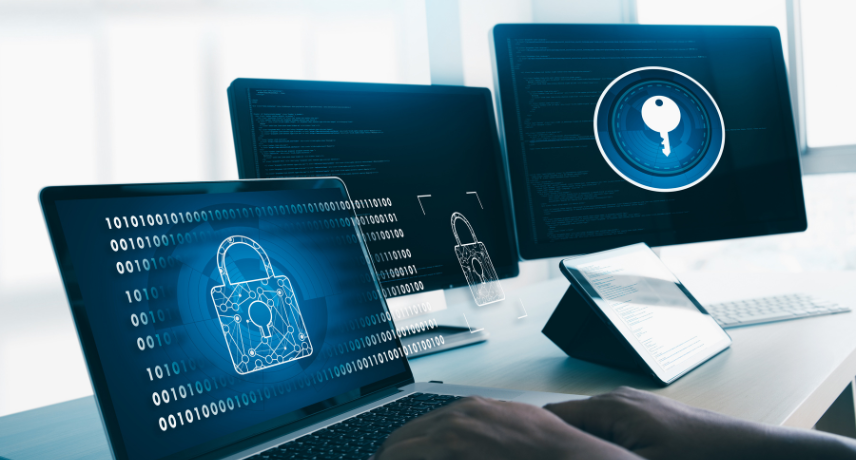
Enquiry Form
The Evolution of Data Security Software: From Firewalls to AI-Driven Solutions
Today, it is more important than ever to keep our data protected in a digital world. Since cyber threats are becoming more complex and widespread, the systems protecting important information should also improve. From the original firewalls in internet history to the modern security systems powered by AI, the development of data security software proves an ongoing struggle between attackers and defenders.
Let’s examine this area further and discover how current security tools are improving how we protect data.
1. The Beginning: Firewalls and Antivirus Software
In the 1990s, protecting your computer online mainly depended on firewalls and antivirus software. The first task of firewalls was to block unauthorized traffic from one network to another. Comparing known threats to a database of signatures using antivirus software.
Yet, these tools were not proactive. They were only capable of blocking threats they already knew about, which meant new types of attacks could still affect them.
2. Intrusion Detection and Prevention
As we entered the early 2000s, businesses understood that perimeter security alone wasn’t adequate. It became important for them to have tools capable of watching internal networks and discovering breaches instantly. The response to such threats comes from Intrusion Detection Systems (IDS) and Intrusion Prevention Systems (IPS).
Because of this, such systems might detect or block questionable activity, adding extra precaution above firewalls.
3. Encryption and Endpoint Security
As people started using mobile devices and cloud computing, companies had to pay special attention to protecting endpoints. Secure encryption software was widely adopted to keep emails, data, and files safe so that anyone intercepting them would need the encryption key to understand them.
One endpoint protection platform combined encryption, anti-malware, and antivirus software.
4. Rise of Cloud-Based Security Solutions
Cloud computing also introduced another problem: securing data hosted off-premises from malicious users. Conventional on-site solutions did not translate well to the elasticity of the cloud environment. Cloud Secure Solutions as a Service came about as a possibility, providing centralized management, real-time monitoring, and more scalable solutions.
Cloud-native platforms are now a requirement for organizations that are reliant upon services provided by AWS, Azure, or Google Cloud.
5. The Role of Artificial Intelligence
Artificial Intelligence has changed the conversation on data security. The foundation of traditional software is established patterns and rules. Security solutions built upon Artificial Intelligence have the capability to recognize anomalies, learn from behaviors, and adapt to new emerging threats in real time.
This allows for identifying zero-day attacks, phishing, and malware attacks that would go undetected.
6. Behavioral Analytics and Threat Intelligence
Modern platforms are no longer limited to identifying known threats; they also utilize behavioral analytics. Behavioral analytics searches for anomalous user or system behavior.
If an employee downloads large quantities of data at midnight, this may be flagged, and alerts will be placed.
These systems also utilize threat intelligence, which is a collection of data sourced from multiple communities to recognize global threats from cybercriminals.
7. Zero Trust Architecture
Currently, the approach has shifted away from “trust but verify” and now really means “never trust, always verify.” Zero Trust Security requires every attempt to access resources, on or off the network, to be authenticated on a continuous basis.
It greatly helps to ensure that both hybrid workforces and dispersed IT environments are well protected.
8. Automation in Incident Response
How quickly cybersecurity is handled matters a lot. As time goes on, a threat can do more damage. Automation tools today are capable of isolating infected systems, undoing the changes, and notifying teams right away, without teams needing to act.
With faster reactions, smaller numbers of attacks can be expected.
9. Compliance and Regulatory Protection
Because of new regulations such as GDPR, HIPAA, and CCPA, businesses must secure their data and provide proof that they follow the rules. Now, data security platforms come with tools that watch over data use, provide reports, and alert users when problems are found.
Companies are therefore protected from the consequences of legal problems and harm to their reputation.
10. The Future: AI, Quantum Security, and Beyond
Going forward, security will advance as new technologies such as quantum computing and blockchain come to light. Using quantum encryption, data is protected at a very high level, while decentralized security models stop attacks from hitting the same point.
To protect your data right now, having a complete AI-run cybersecurity solution is best.
Conclusion:
From its early days with easy-to-use firewalls, data security software now includes advanced, complex systems. Since risks from cyberattacks are increasing, businesses need to use the latest technologies to stay one step ahead of threats.
If your organization hasn’t started using AI-based security or cloud protection, you should make the change now. It will not only protect your systems but will also help you handle threats that are likely to evolve.